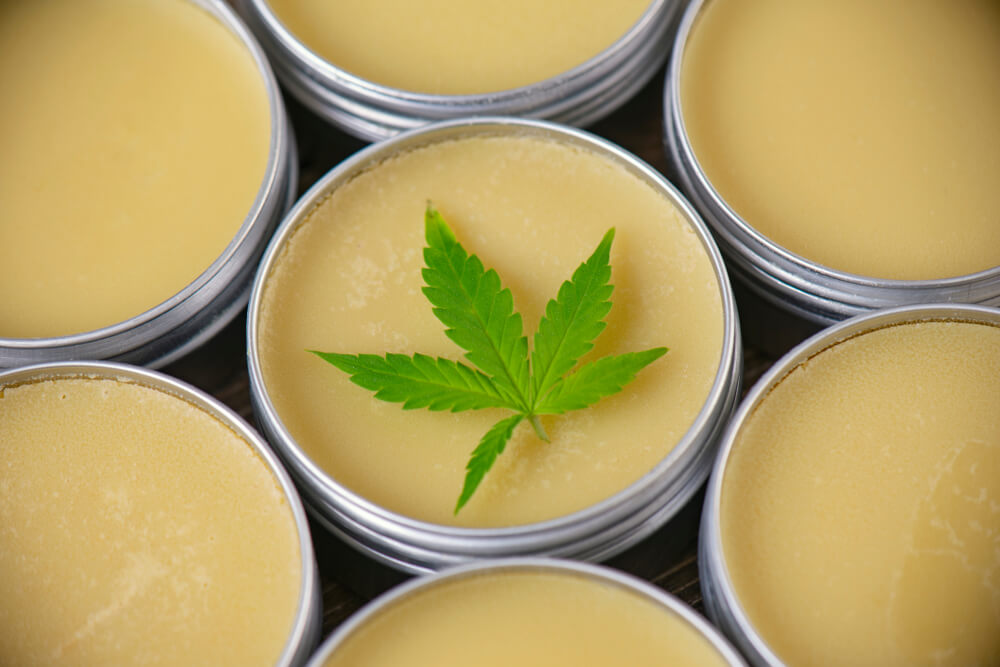Have you seen the growing availability of cannabis topical products and wondered, what do they do? You’re not alone! Having a good level of skepticism is a good idea. In the following review, you’ll learn all about infused topicals. We’ll answer all of the questions you may have around whether they work and how they impact your body.
By the end of this review, you’ll know all you need to know about infused creams. These products may be right for you, but maybe not. You’ll find out by the end of this review. This cannabis content may also encourage you to use some of your CBD oils to create topical products.
What are Cannabis Topicals?
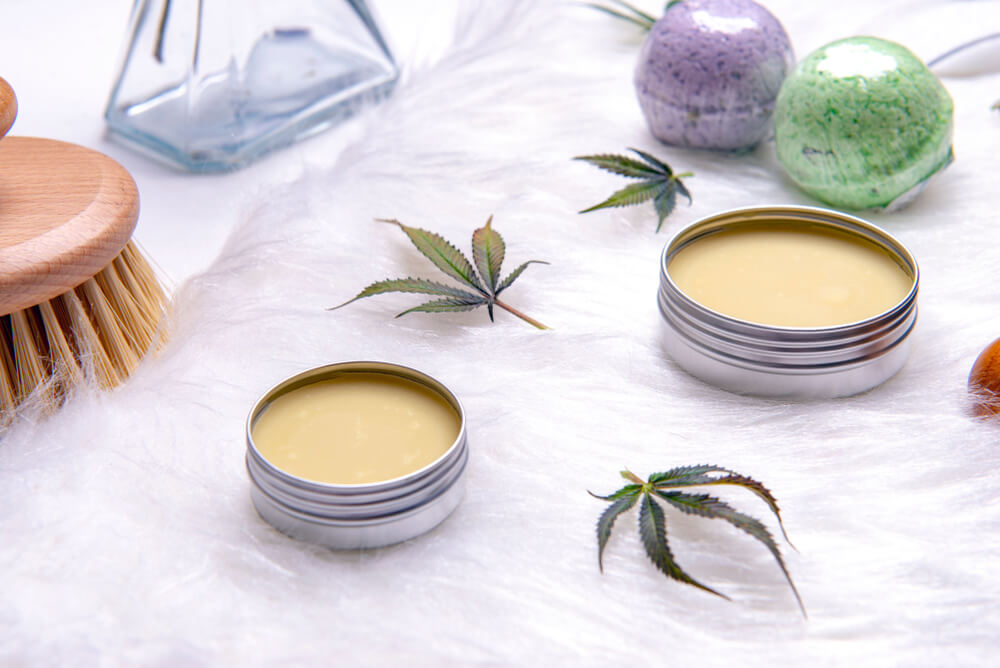
In brief, they are creams that have cannabinoids infused, specifically THC and CBD, though some cannabinoids such as canabinol (CBN) are beginning to be introduced as well.
These cannabis-infused products are used for various medical conditions, many of which are skin related. Generally speaking, topicals are not used to get high. Instead, they are used for therapeutic reasons, as we’ll discuss below.
Topical products are used as a health product for your skin, although claims around wrinkles, dry skin, etc., should be avoided at this stage. You’ll see some cannabis companies use health claims, especially with CBD, but you should take them with a grain of salt.
There are numerous salves, creams, and lotions that can be purchased with THC or CBD inside. Let’s not forget about patches, sprays, oils, and gels.
So many product options!
While there is much variety in the exact types of infused topicals, they all share the common feature of having cannabinoids packed inside. Most often, we see THC and CBD, but with the growing interest in Cannabinol (CBN) and Cannabigerol (CBG), expect to see these as well very soon.
How Do Cannabis Topicals Work?
This localized relief appears to be mediated by the local nerves and immune cells in the skin.
This is the target for those THC and CBD compounds in your cream.
If you’re hoping to get real high, go with smoking, vaping, or infused-edibles instead. The reason for this local symptomatic relief rests in the functions of the endocannabinoid system (ECS), which we turn to next.
The Endocannabinoid System (ECS)
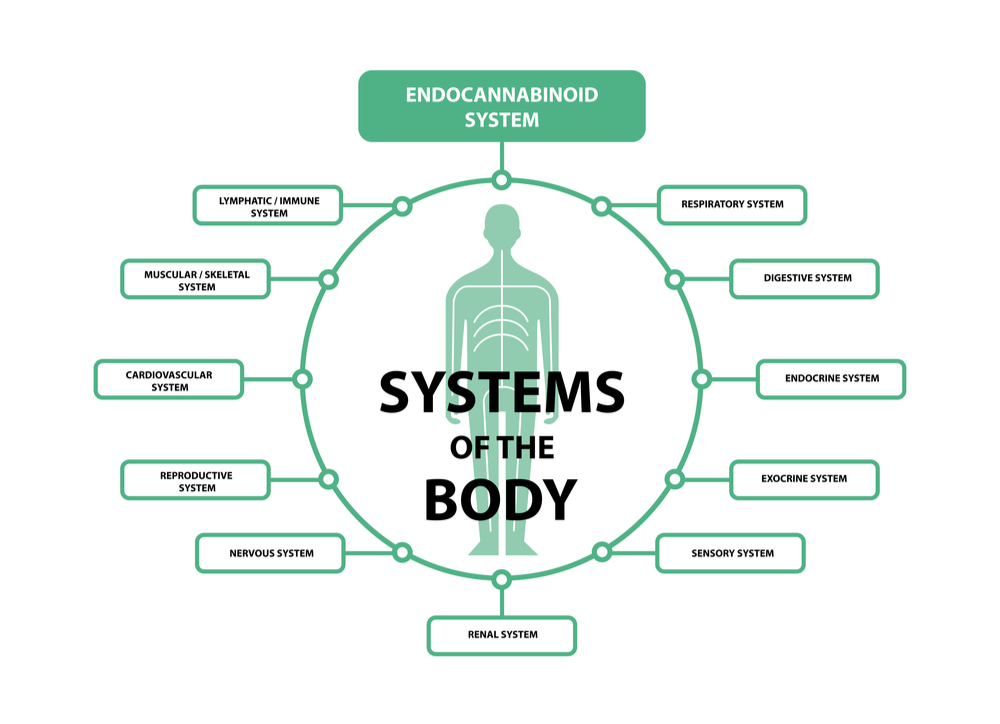
If you haven’t gotten the message just yet, we all have an endocannabinoid system (ECS). This set of receptors, enzymes, and endocannabinoids exists throughout our bodies. It is the Cannabinoid Receptor 1 (CB1) that helps get us high. There are lots of CB1 in the brain, but they are also found in the skin. This contrasts with the Cannabinoid Receptor 2 (CB2), which exists in a much higher density around the body.
Based on scientific investigations, we know that CB1 and CB2 receptors are found throughout the skin.
Specifically, they can be found inside cutaneous nerve fiber bundles, epithelial cells of hair follicles, sebocytes, and sweat glands. They are also active in immune cells like mast cells and macrophages.
The researchers found this “abundant distribution” of these receptors and suggested that this must have implications for the anti-inflammatory and anti-nociceptive actions of cannabinoid receptors.
Our understanding of how cannabis influences our skin and the immune system is snowballing. We now know that the ECS is heavily involved in the maintenance of skin homeostasis and barrier formation/regeneration.
The dysregulation of the ECS is involved in a bunch of common diseases and disorders. This list includes acne, atopic dermatitis, hair disorders, psoriasis, itch, scleroderma, acne, and various tumors. In summary, more evidence is needed, but there is a promising future for more research in this field.
If you’re expecting your problem to disappear immediately or to attain full-relief of symptoms, you may be disappointed. It is best to keep your expectations at a reasonable level. Cannabis can help facilitate recovery, it’s not a magic bullet or evidence-based cure, but the research is certainly promising!
Transdermal or Not?
Usually, these cannabinoids are infused in the form of extracts, isolates, or oils. One major feature to note is whether the cream is a topical alone, or uses transdermal technology. When we say transdermal, we are talking about the facilitation of the transportation of cannabinoids from the skin to the bloodstream. For example, this formulation uses emu oil for some reason.
Without transdermal features, which require other chemicals to act as carriers, cannabinoids are unlikely to reach the bloodstream in any significant numbers. This goes for the use of THC, CBD, and all the other lipid cannabinoids (they are fats!).
If you’re looking to get high off of a THC topical, your best bet will be to source a transdermal patch. Lotions, salves and ointments that are applied directly to the skin will only penetrate surface deep. They’ll effectively treat the area you apply them to but they won’t be powerful enough to reach into the bloodstream and provide you with that psychoactive high.
Therapeutic and Medical uses of Infused Topicals
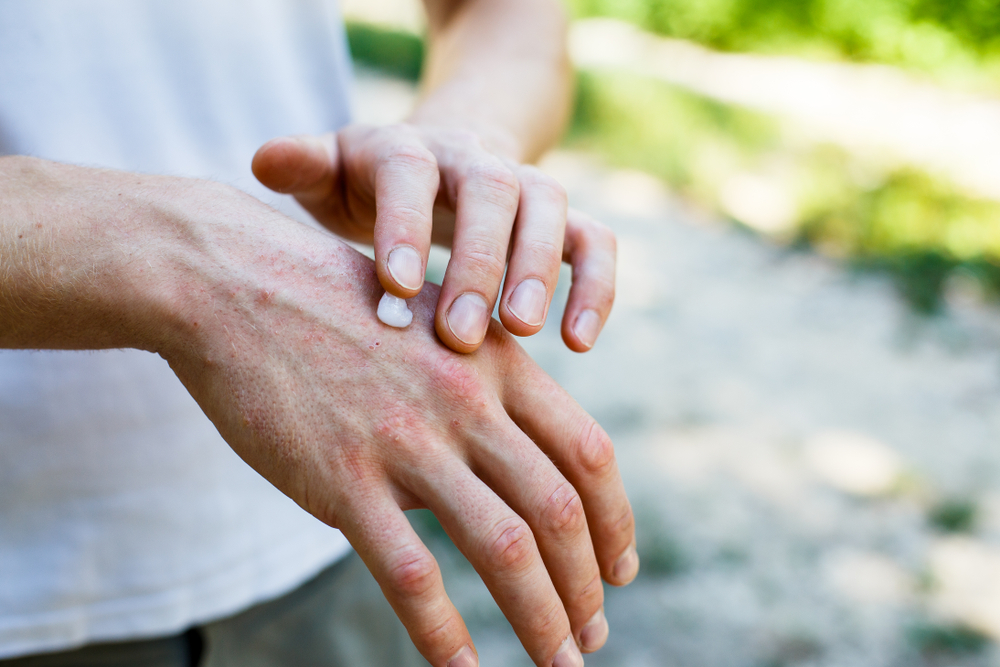
Individuals often try out cannabis topicals for pain and inflammation concerns. Medical cannabis patients often take advantage of the benefits of topicals for a variety of conditions.
Therapeutic uses of transdermal infused topicals include:
- Skin conditions like psoriasis and dermatitis
- Edema (swelling)
- Immune and Inflammatory conditions (like rheumatoid arthritis)
Ingredients in Topicals
Beyond the cannabinoids, other ingredients include various essential oils, vitamins, and compounds like aloe vera, shea butter, vegetable glycerin, and more. Ingredients like menthol, capsaicin, argan oil, and hyaluronic acid are added to create a more stimulating effect and possibly enhance benefits.
You’ll find myriad CBD topicals available online. Even THC-infused creams are becoming more common in legal cannabis markets. As mentioned, some are transdermal, while others are not. You can also find transdermal patches that claim to have longer-lasting effects while also attaining good movement of cannabinoid into the bloodstream. It all depends on the ingredients inside the topical you’re buying.
Do Cannabis Topicals work?
The first factor to consider here is what we mean by ‘work,’ as the goal for using cannabis topicals impacts their effectiveness. So let’s start with the big one, are you looking to get high? If so, then topicals are not the right product for you. While some people do report feeling high with some large topical doses of THC, the evidence indicates that at the very least, this is an ineffective way to get high. It would be better to eat an edible or use cannabis oil if getting high is the goal. Beyond that, there are several other uses for these infused creams that have a much better chance of working.
Dermatology patients use infused topicals for a range of skin disorders and diseases. Beyond that, there are patents, but not medical studies, suggesting that infused topicals may help in the treatment of methicillin-resistant Staphylococcus aureus (MRSA).
Topical products appear to help promote some local pain relief. One study explores the transdermal application of CBD in a rat model of arthritis and found reductions in pain-related behaviors and inflammation. The benefits of topical applications include avoiding problems with gastrointestinal administration and first-pass metabolism. Also, this delivery method provides more constant plasma levels.
Final Thoughts on Topicals
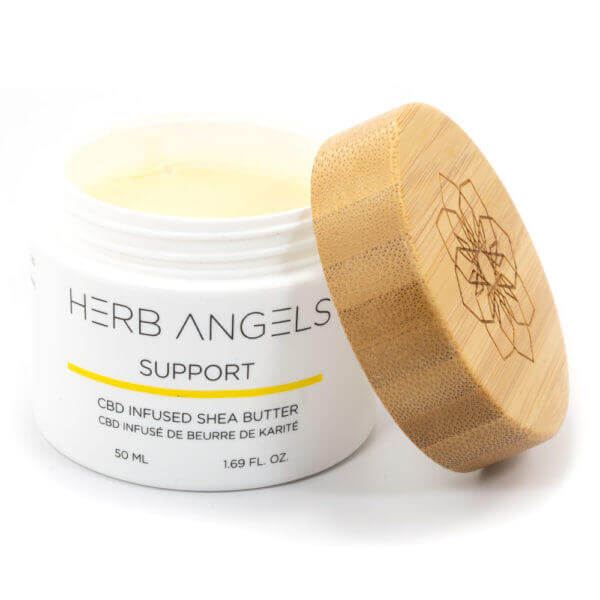
Although there is some evidence that the cannabinoids will reach the bloodstream through transdermal patches, traditional cannabis topicals do not seem to produce sufficient levels of THC in the blood to cause psychoactivity.
However, it may just be enough for certain therapeutic purposes. The benefits of topicals are more likely to relate to localized issues of pain, inflammation, and swelling. If you want full-body effects, an infused-edible is likely the better choice.
Always check the ingredients carefully. You will want to be sure that the content is suitable for your skin. Most infused topicals are not meant for around the mouth or eyes, or to be used on broken skin. That said, the cannabis plant has been applied to wounds for thousands of years. In a study on a few patients, researchers found that topical products helped to reduce opioid utilization and improved pain management.
Infused topical products hold a lot of potential for various situations, but much more research is needed.
Until that time, topical products appear to be safe, as long as purchased from a reputable producer. Keep your expectations in check, but consider using topicals for that local skin, muscle, swelling, or joint-related issue. Always follow instructions on product labels and consult your physician if you have a relevant medical condition or are taking medications.

